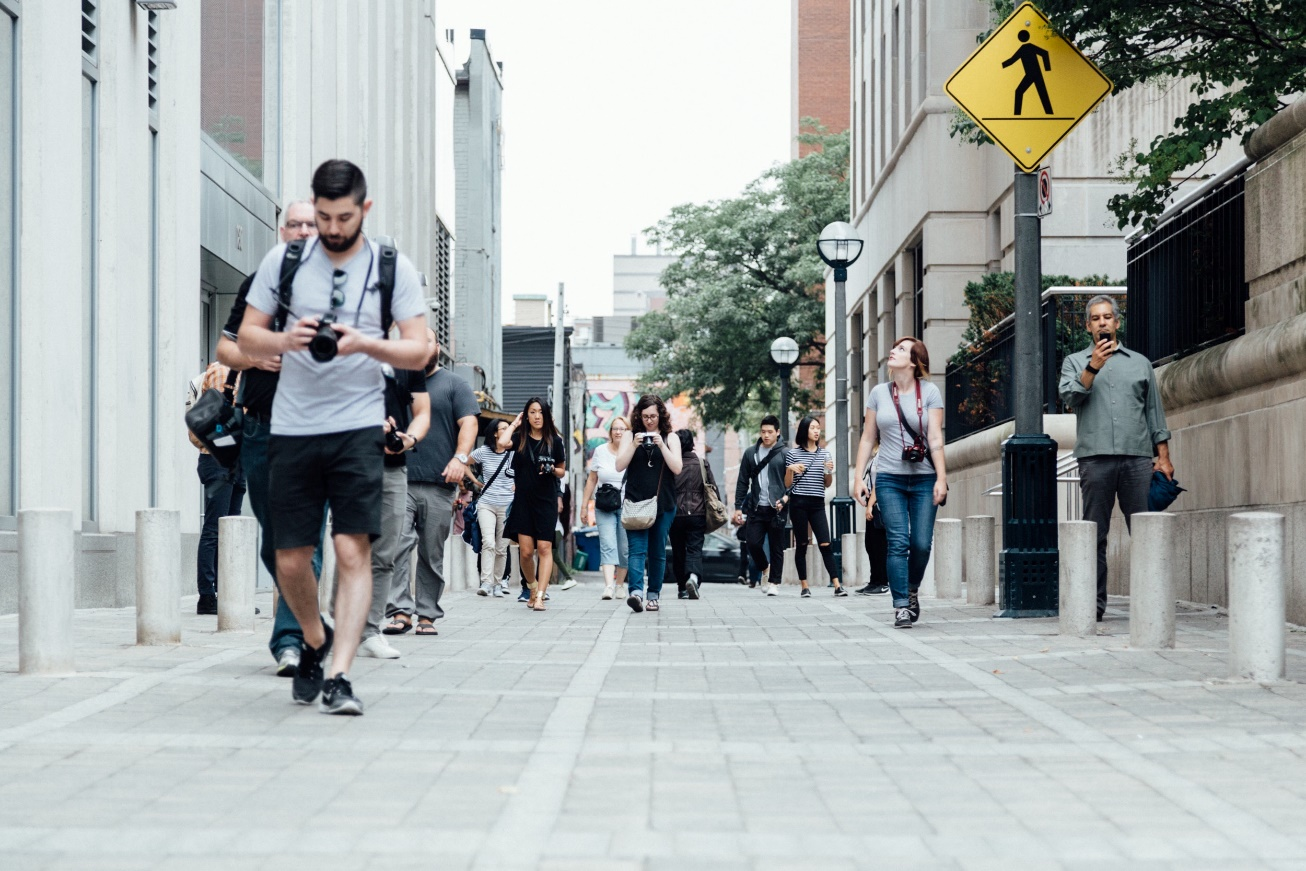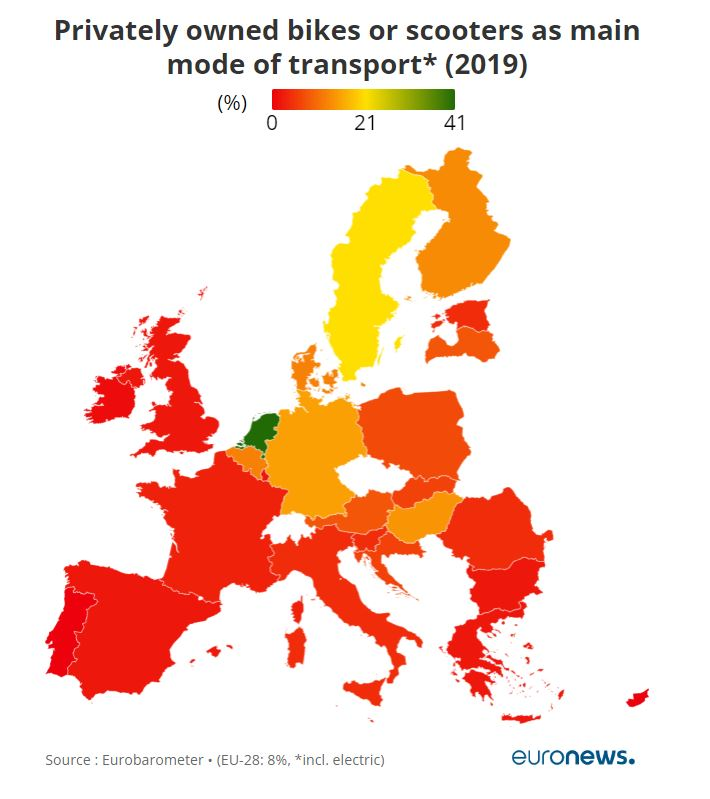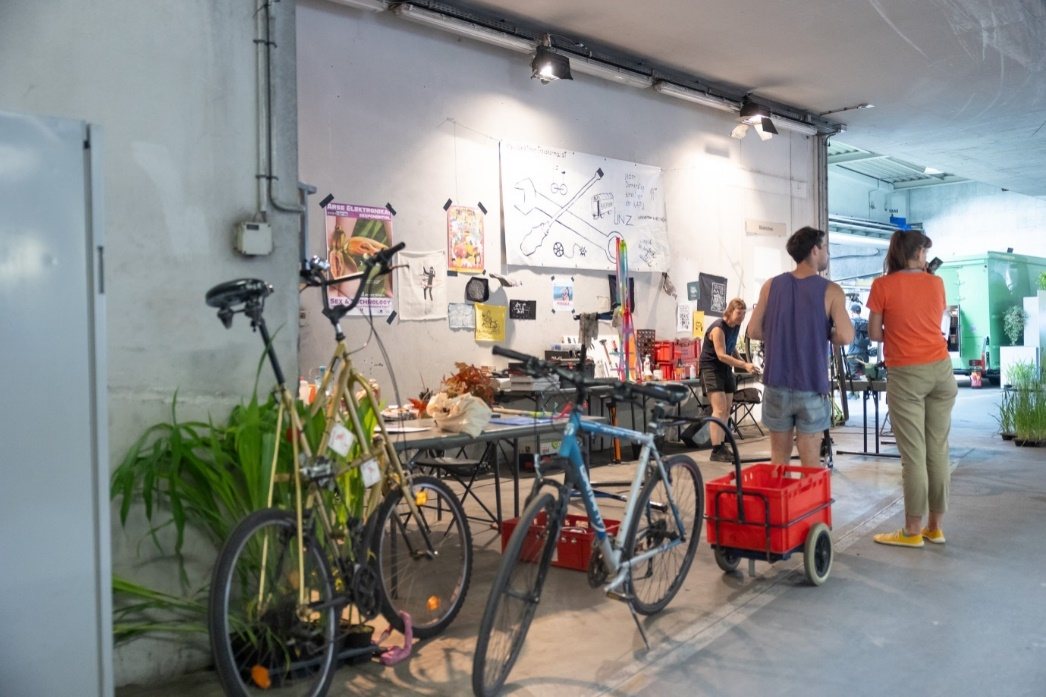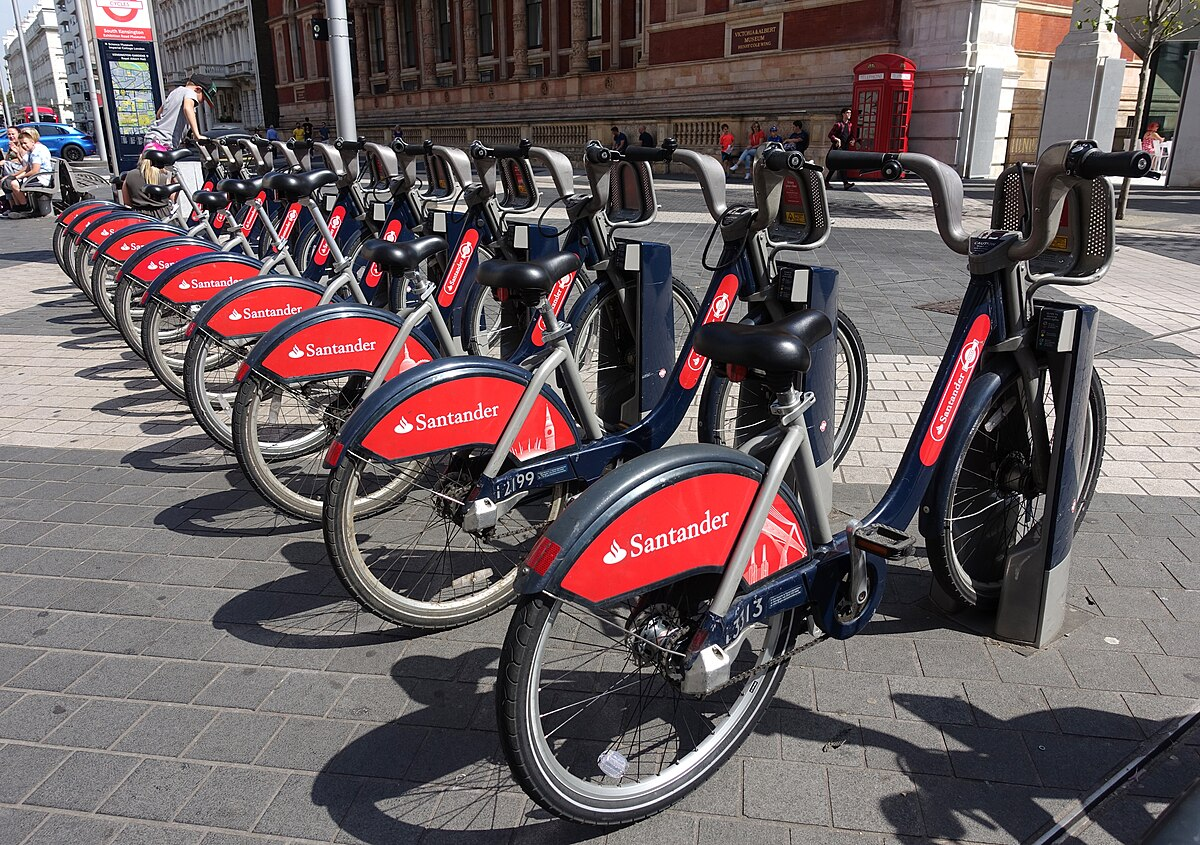Pedestrians and cycling
What are benefits of active mobility?
Active mobility is one of the most significant ways to save energy. Not only do you save energy, but you also boost your physical and mental health by walking or cycling.
Many European cities are built mainly for pedestrians rather than cars. Their centuries-old age is the reason – they were built at a time when people used to walk a lot. Only in the last hundred years have cars appeared in the urban landscape.
For example, large cities like Paris and London are much easier to navigate on foot, by bike, and by public transport than by car. Other good examples are Amsterdam and Copenhagen.

Photo source: Pxhere
When more people ride bikes or walk, the air quality increases, the community is healthier in the long run. Promoting walking and cycling should help develop a healthy lifestyle and increase road safety, which could be beneficial for any community.
Limited access to cars, and a multimode transit system to ensure connections with the railroad system, will be an asset in the long run, for every city.

Photo source: Freepik
How do cities benefit from walking?
The pedestrian mode is an important component of urban networks. It interacts with other transportation means (automobile, bicycle, transit).
Pedestrian-friendly cities offer some key advantages:
- Encourages Physical Activity, leading to increased physical activity levels, which can reduce the risk of obesity, heart disease, and other chronic illnesses.
- Cleaner Air: reduced air pollution, better respiratory health for residents.
- Access to Amenities: easier for residents to access amenities such as shops, restaurants, parks, and public transit, enhancing convenience.
- Preservation of Green Spaces: priority to green spaces and parks, leading to biodiversity conservation, urban cooling, and overall environmental health.
- Cost Savings: lower transportation costs for residents, including fuel, maintenance, and parking expenses.
- Less Reliance on Automobiles: decrease of the need for expansive road networks and parking infrastructure, freeing up space for other uses.
How popular is cycling in Europe?
Cycling represents a growing share of mobility. It is a healthy, green, and flexible means of transport that helps achieve savings and generate jobs. Bicycle use is already very popular in some European countries, such as the Netherlands and Denmark.
However, a lot remains to be done when it comes to safety and suitable cycling infrastructure across the EU. Although the regulatory framework on cycling is determined at the Member State level, with concrete action shaped locally, the EU provides best practice advice and financial support for infrastructure development.
An estimated Euro barometer survey figures 1 billion bicycles in the world – about as many as passenger cars. However, big differences exist between EU Member States. A 2020 report shows that, while the use of cars remains dominant, 8 % of EU citizens – mainly in big cities – use a privately owned bike or scooter as their main mode of daily transport, with an additional 1 % using shared bikes or scooters daily. Numbers are at their highest in the Netherlands (41 %), followed by Sweden (21 %). Meanwhile, daily cycling remains low (1–5 % of journeys) in about a third of all EU countries.

Photo source: Euronews
Cycling has several environmental and health benefits. It is an affordable and flexible means of transport that benefits society as a whole and its members in several ways. As a regular physical activity, cycling reduces the risks of heart disease, stroke, certain cancers, and diabetes. Cycling can also help lessen greenhouse gas emissions, air pollution and noise. As a means of transport over short distances, it can help reduce traffic congestion, and thus also delays and lost working hours. Moreover, it can contribute to lowering the dependence on fossil fuels.
Cycling can also create new jobs – such as bicycle manufacturing and retail trade, repairs, and infrastructure construction and maintenance, but also for instance in cycling tourism. Cargo bikes are now a familiar presence. Meanwhile, bicycle delivery and courier services have been booming since the start of the pandemic and the restrictions and public health measures put in place, which led to the rapid development of e-commerce.
Municipalities can sustain bicycle use by:
- Sponsoring social enterprises or small shops to rent, repair, or store bikes; organize workshops for do-it-yourself in the area of bike maintenance (these can be organized by public-private partnerships)
- Issue grants for buying the first bicycle – for students, young people, families, or for schools, neighbourhoods
- Organize better the bicycle lane traffic, close some streets for the weekends (allowing only pedestrian/bicycle traffic) identify and set up extra bike parking spaces, at affordable prices
- Organize mass events to promote bicycle use – bicycle skills competitions, thematic parades and marches, competitions with legislation quizzes (they can have bicycles as prizes)
For example the Bikekitchen Linz has been an open non-profit self-help workshop since 2009, a place where anyone can repair, revamp, service, or modify their bike. The bike self-help workshop works in a resource-saving way, as it utilizes almost exclusively existing materials and recycles them.

Photo source: Flickr
A Bicycle Sharing Scheme allows a user to collect a bicycle on loan from one location and return it to another destination. Bike sharing began in the 1960s in a simple form in Amsterdam; it has continued to evolve through technological innovation to a more sophisticated model of bike transportation within cities and has rapidly expanded over the last decade. The evolution of business models and private investment continues to reshape and widen the reach of bike-sharing services dramatically, so much so that the increased popularity is embedded now in the wider landscape of an emerging sharing economy in urban centres worldwide.

Photo source: Wikimedia Commons
The Copenhagenize Index gives cities points for their efforts towards re-establishing the bicycle as a feasible, accepted, and practical form of transport.
Over 600 cities with over 600,000 inhabitants from all parts of the world were assessed for the 2019 index. Three-quarters of the top 20 cities are in Europe. First place is for Copenhagen, with a score of 90,2%, followed by Amsterdam (89,3%), Utrecht (88,4%), Antwerp, Strasbourg ...
In the not-so-distant future, when online activities will replace physical ones at a higher rate as was possible during the COVID-19 years, the cities must be mostly oriented toward pedestrians and eco-friendly motorized vehicles.
